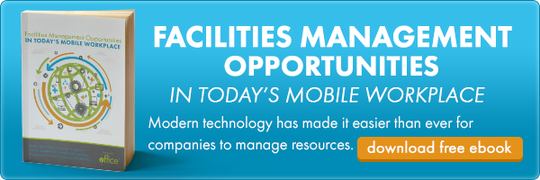Where Is Your Company In The Evolution of The Workspace?


Regardless of what industry you are a part of, there is one thing that remains constant—change. Change is inevitable and is at the very heart of every companies’ success. Fight this natural evolution and you will be left behind with a cloud of dust surrounding you. As leaders in the IWMS industry, iOffice has helped guide many companies through their evolutionary process. And if there is one thing we have learned through it all, it’s that each organization is at a different stage is their evolution, with varying visions and goals along the way. The end goal, however, is always the same— to be a leader in their industry.
With so many differing forces at work today, it is impossible to lay out a business model that will fit into the mission and core values for every business. It is important to keep said mission at the forefront when creating a plan of action, with careful consideration to the multitude of individual personalities at work. Entrenched deeply in this process is the Facilities Manager, whose job is to see this vision come to fruition, while also ensuring the day to day operations go off without a hitch.
Perhaps one of the biggest challenges enterprises face today is attracting and retaining top talent. For the first time ever, we have four very different generations present in our workforce working side by side. Prior professional and personal experiences, along with their formal educational background differs vastly from one generation to the next. But one thing remains constant- they must be kept happy and engaged or they will seek employment elsewhere. While one may be more comfortable with an open, well-lit floor plan, another may find themselves more productive working in their own private space. The necessity to arm each individual with the tools they need to succeed makes identifying the proper workspace environment top priority. As an organization grows, so too will their workspace needs; it is critical to maintain vigilance in regards to these demands.
another may find themselves more productive working in their own private space. The necessity to arm each individual with the tools they need to succeed makes identifying the proper workspace environment top priority. As an organization grows, so too will their workspace needs; it is critical to maintain vigilance in regards to these demands.
With facilities expenses second only to employee costs, companies must transform their workspace into one that is not only inspiring for their employees, but also makes full use of every inch of the building. The solution varies vastly from company to company. While one may need to re-organize their space from top to bottom, another may already have the open floor plan and private spaces but is seeking out ways to offer wider mobility to their employees. The FM’s job is to get to know their teammates on a personal level in order to identify what workspace transformation meets every individuals’ needs.
As technology advances more and more, so too do our needs and the way we think. The birth of smart phones, tablets and mobile apps, along with laptops and the cloud, has afforded us a multitude of options with regards to how we work. Many companies are finding a greater need to supply their employees with the tools to work at the office, on the road and at home. In 2011, it was estimated approximately 34 million people worked from home at least part of the time. Forrester Research predicts that “the number of people who work remotely will nearly double — to approximately 63 million people — by the year 2016.” While many companies previously resisted the option of allowing their employees to work remotely, many are now realizing their staff are more productive when given the option to work from home. Remote work proves to be further advantageous in that organizations are afforded more flexibility regarding their physical assets—they are able to do more with less space. It is this realization that has caused an increase in hoteling and hot-desking. Whether your company is in the thick of this trend in mobility or just getting started, the necessity to be mobile is a movement that is here to stay.
The internet is an information highway, providing us with answers at a moment’s notice. As a result, our society has become more aware of topics that might otherwise have been lost. The mark we make on our environment and the legacy we leave behind for our children is of growing concern. Individuals are “doing their part” personally, and looking to their employers to participate as well. Consequently, many organizations are seeking out ways to “go green”. Regardless of the size of the company or where they are in their evolution, most companies are finding ways to decrease their environmental impact.
The ever-present need for facility managers to increase performance, decrease costs and maximize assets has prompted establishments to invest in software solutions. And with the invention of the cloud, many are realizing the possibilities of their investments, affording their employees the ability to share real-time information and collaborate regardless of where they are. Whether the investment be in a small management system to store client information and files, or a multi-module platform for space management, asset management and room reservation, companies are realizing they cannot keep up without investing in relevant software solutions.
Regardless of where you are in this process, technological advances over the last decade have forced facilities to evolve or be left behind. Today, the wide open workspace has endless possibilities. In the thick of it all is the Facilities Manager, mapping out solutions to the challenges their company faces, paving the path to success.
